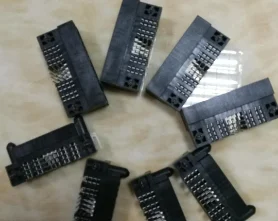MedlonUploaded:2024-02-27Browse:2753
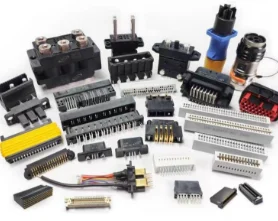
At our company, we specialize in providing top-quality power connectors to keep all of your devices running smoothly. Our products are designed with reliability and durability in mind, ensuring that your devices maintain a consistent and stable power supply. With a wide range of options to choose from, including connectors for laptops, smartphones, and other electronic devices, we have the perfect solution for all of your power needs. Our connectors are made from high-quality materials and undergo rigorous testing to ensure their performance and safety. Trust us to provide you with the best power connectors on the market and keep your devices running smoothly.
Powering up your devices has never been easier with our top-of-the-line power connector solutions. We understand the frustration of constantly having to switch out cables and adapters just to keep your devices charged. That's why we have curated a collection of the best power connectors, ensuring compatibility with all your devices. Whether you're at home, in the office, or on the go, our connectors are designed to provide fast and efficient charging so you can always stay connected. Don't let a dying battery slow you down. Power up with our reliable and convenient power connector solutions today.
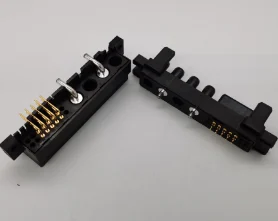
1.What is the average lifespan of a power connector?
The average lifespan of a power connector can vary greatly depending on the quality of the connector, frequency of use, and environmental factors. In general, a well-made power connector can last anywhere from 5 to 10 years. However, some connectors may last much longer, while others may fail after only a few years. It is important to regularly inspect and maintain power connectors to ensure their longevity.
2.What are the potential consequences of using an incorrect power connector for a device?
1. Damage to the device: Using an incorrect power connector can cause damage to the device, especially if the voltage or polarity is not compatible. This can result in the device malfunctioning or even becoming completely unusable. 2. Fire hazard: If the power connector is not the correct size or type, it may not be able to handle the amount of power required by the device. This can lead to overheating and potentially cause a fire. 3. Electrical shock: Using an incorrect power connector can also increase the risk of electrical shock. If the connector is not properly grounded or if the voltage is too high, it can cause a dangerous electrical shock to the user. 4. Voiding warranty: Most devices come with a warranty that covers any damage caused by manufacturer defects. However, if the device is damaged due to using an incorrect power connector, the warranty may become void. 5. Data loss: In some cases, using an incorrect power connector can cause data loss or corruption. This is especially true for devices such as external hard drives or USB devices, where the power supply is directly connected to the data storage. 6. Incompatibility: Using an incorrect power connector can also result in the device not functioning properly or not working at all. This is because the device may not be able to receive the correct amount of power it needs to operate. 7. Costly repairs or replacements: If the device is damaged due to using an incorrect power connector, it may require costly repairs or even need to be replaced entirely. This can be a significant financial burden for the user. 8. Safety hazards: In addition to fire and electrical shock hazards, using an incorrect power connector can also pose other safety hazards. For example, if the connector is loose or not properly secured, it can cause tripping hazards or damage to other nearby devices. 9. Frustration and inconvenience: Using an incorrect power connector can be a frustrating and inconvenient experience. It can result in the device not working when needed, causing delays and disruptions to daily tasks or work. 10. Legal consequences: In some cases, using an incorrect power connector can lead to legal consequences. For example, if the device causes damage or harm to someone else due to using an incorrect power connector, the user may be held liable for any resulting damages.
3.How do I clean and maintain my power connectors to ensure proper functioning?
1. Disconnect the power supply: Before cleaning or maintaining the power connectors, make sure to disconnect the power supply from the device or outlet to avoid any electrical shock. 2. Use compressed air: Use a can of compressed air to blow away any dust or debris from the power connectors. Hold the can upright and use short bursts of air to avoid any moisture buildup. 3. Wipe with a cloth: Use a soft, lint-free cloth to wipe the power connectors. You can also dampen the cloth with a small amount of isopropyl alcohol for better cleaning. 4. Check for corrosion: Inspect the connectors for any signs of corrosion. If you find any, use a small amount of vinegar or lemon juice on a cotton swab to gently clean the affected area. Make sure to dry the connectors thoroughly before reconnecting the power supply. 5. Tighten loose connections: Over time, the power connectors may become loose, which can cause power interruptions. Use a screwdriver to tighten any loose connections to ensure a secure and stable connection. 6. Use dielectric grease: If you live in a humid or coastal area, it is recommended to use dielectric grease on the power connectors. This will help prevent corrosion and ensure a smooth flow of electricity. 7. Avoid overloading: Make sure not to overload the power connectors with too many devices. This can cause overheating and damage the connectors. Use a surge protector to distribute the power evenly and protect the connectors from power surges. 8. Regular maintenance: It is important to regularly clean and maintain the power connectors to ensure proper functioning. Make it a part of your routine maintenance schedule to avoid any potential issues. 9. Replace damaged connectors: If you notice any damage or wear and tear on the power connectors, it is best to replace them with new ones. This will ensure a safe and reliable power connection. 10. Consult a professional: If you are unsure about how to clean or maintain the power connectors, it is best to consult a professional. They can provide you with proper guidance and ensure that the connectors are in good working condition.
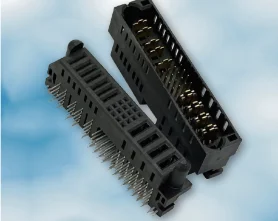
4.What is the difference between a power connector and an electrical socket?
A power connector is a device used to connect an electronic device to a power source, such as a wall outlet or power strip. It typically has two or three prongs that fit into corresponding slots in the socket. An electrical socket, also known as an outlet or receptacle, is a fixed device installed in a wall or power strip that provides a connection point for a power connector. It has slots or holes that match the prongs of a power connector and allows electricity to flow from the power source to the connected device. In summary, a power connector is the plug that goes into the socket, while the electrical socket is the fixed outlet that provides the connection point for the power connector.
5.How do I troubleshoot a faulty power connector?
1. Check the power source: The first step is to make sure that the power source is working properly. Plug in another device to the same outlet or power strip to see if it is receiving power. If not, the issue may be with the power source and not the connector. 2. Inspect the connector: Check the power connector for any physical damage or loose connections. If there are any visible signs of damage, such as bent or broken pins, it may need to be replaced. 3. Clean the connector: Sometimes, dust and debris can accumulate in the power connector, causing it to malfunction. Use compressed air or a small brush to clean out any dirt or debris. 4. Test with a different cable: If the power connector is detachable, try using a different cable to see if the issue is with the cable and not the connector. If the new cable works, then the original cable may be faulty and needs to be replaced. 5. Check the power adapter: If the power connector is attached to a power adapter, make sure it is functioning properly. You can test it by plugging it into a different device or using a multimeter to check the voltage output. 6. Use a voltage tester: If you suspect that the power connector is not receiving power, use a voltage tester to check the voltage at the connector. If there is no voltage, then the issue may be with the power source or adapter. 7. Replace the power connector: If none of the above steps work, the power connector may need to be replaced. You can purchase a new one from the manufacturer or a third-party supplier. 8. Seek professional help: If you are not comfortable troubleshooting the issue yourself, it is best to seek professional help. A technician will be able to diagnose and fix the issue for you.
6.Are there any regulations or standards for power connector manufacturing?
Yes, there are several regulations and standards that govern the manufacturing of power connectors. These include: 1. International Electrotechnical Commission (IEC) standards: The IEC sets international standards for electrical and electronic components, including power connectors. These standards cover aspects such as dimensions, performance, and safety requirements. 2. Underwriters Laboratories (UL) standards: UL is a global safety certification company that sets standards for electrical and electronic products, including power connectors. UL standards cover aspects such as safety, performance, and environmental impact. 3. Restriction of Hazardous Substances (RoHS) directive: This directive restricts the use of certain hazardous substances in electrical and electronic equipment, including power connectors. It aims to protect human health and the environment. 4. Registration, Evaluation, Authorization, and Restriction of Chemicals (REACH) regulation: This regulation aims to ensure the safe use of chemicals in products, including power connectors. It requires manufacturers to register and provide information on the substances used in their products. 5. National and regional standards: Many countries and regions have their own standards for power connectors, which may be based on international standards or have additional requirements. Manufacturers of power connectors must comply with these regulations and standards to ensure the safety, performance, and environmental impact of their products.
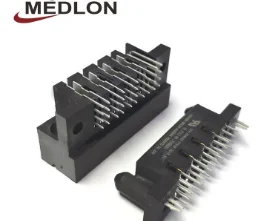
7.Are there any special considerations for outdoor use of power connectors?
1. Weatherproofing: Outdoor power connectors should be designed to withstand exposure to various weather conditions such as rain, snow, and extreme temperatures. They should be made of materials that are resistant to corrosion and UV rays. 2. IP Rating: The IP (Ingress Protection) rating of the connector should be considered when using it outdoors. A higher IP rating indicates better protection against dust and water ingress. 3. Durability: Outdoor power connectors should be able to withstand rough handling and frequent use. They should be made of high-quality materials that can withstand outdoor conditions and have a long lifespan. 4. Proper grounding: It is important to ensure that the power connector is properly grounded to prevent electrical hazards and ensure safe operation. 5. Waterproofing: If the connector is going to be used in wet or damp environments, it should have proper waterproofing measures in place to prevent water from entering the connection. 6. Locking mechanism: Outdoor power connectors should have a secure locking mechanism to prevent accidental disconnection due to wind or other environmental factors. 7. Compatibility: Make sure that the power connector is compatible with the equipment or devices it will be used with. Using incompatible connectors can lead to damage or malfunction. 8. Maintenance: Regular maintenance and inspection of outdoor power connectors is important to ensure they are functioning properly and to identify any potential issues. 9. Proper installation: It is important to follow the manufacturer's instructions for proper installation of outdoor power connectors. Improper installation can lead to safety hazards and damage to the equipment. 10. Use of protective covers: When the connector is not in use, it is recommended to use protective covers to prevent dirt, debris, and moisture from entering the connection.
8.How do I troubleshoot a loose power connector?
1. Check the power cord: The first step is to check the power cord itself. Make sure it is not damaged or frayed in any way. If it is, replace it with a new one. 2. Check the power outlet: Sometimes, the problem may not be with the power connector, but with the power outlet. Make sure the outlet is working properly by plugging in another device. 3. Tighten the connector: If the connector is loose, try tightening it with your fingers. If it still feels loose, use a small screwdriver to tighten the screws on the connector. 4. Clean the connector: Over time, dust and debris can accumulate in the power connector, causing it to become loose. Use a can of compressed air to clean out any dirt or debris that may be stuck inside. 5. Check the connection on the device: If the power connector is attached to a device, make sure the connection is secure. If it is loose, try tightening it or using a different connector. 6. Use a different power cord: If the power cord is the issue, try using a different one to see if it makes a difference. If the new cord works, then the old one may need to be replaced. 7. Consider using a stabilizer: If the power connector is constantly coming loose, you may want to consider using a stabilizer. This is a small device that attaches to the power cord and helps keep it in place. 8. Seek professional help: If none of the above steps work, it may be best to seek professional help. A technician can diagnose the issue and provide a solution, such as replacing the power connector or the device itself.
9.Can a faulty power connector cause damage to my device?
Yes, a faulty power connector can potentially cause damage to your device. If the connector is not providing a stable and consistent power supply, it can cause fluctuations in the device's power input, which can lead to overheating, short circuits, and other electrical issues. Additionally, a faulty power connector can also cause physical damage to the device if it is not securely connected or if it becomes loose and causes the device to fall or get pulled off a surface. It is important to regularly check and replace any faulty power connectors to prevent potential damage to your device.
